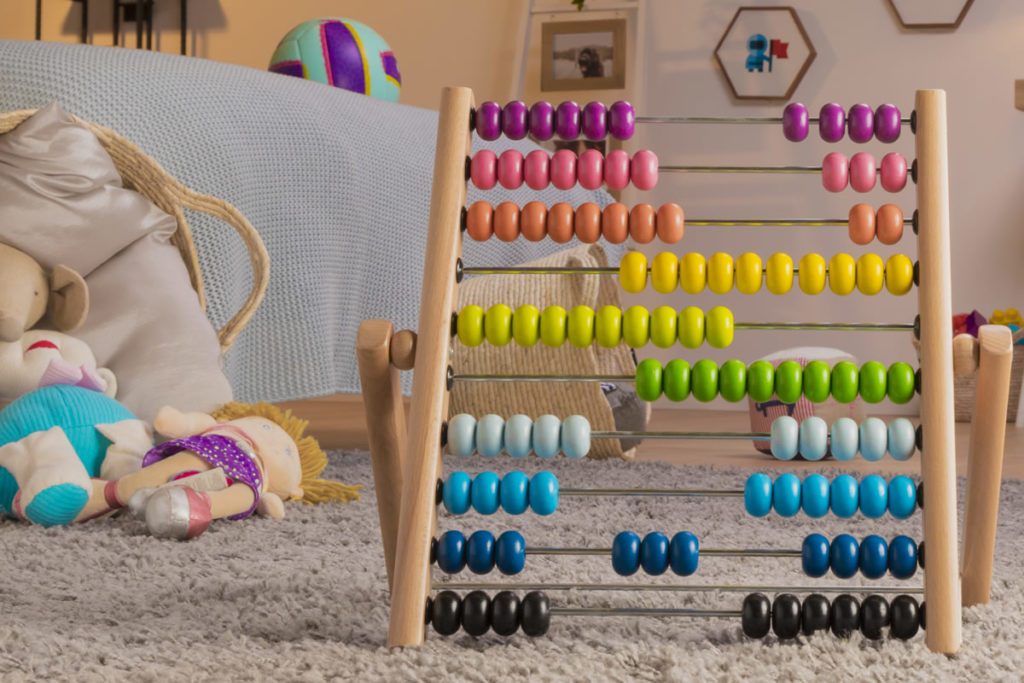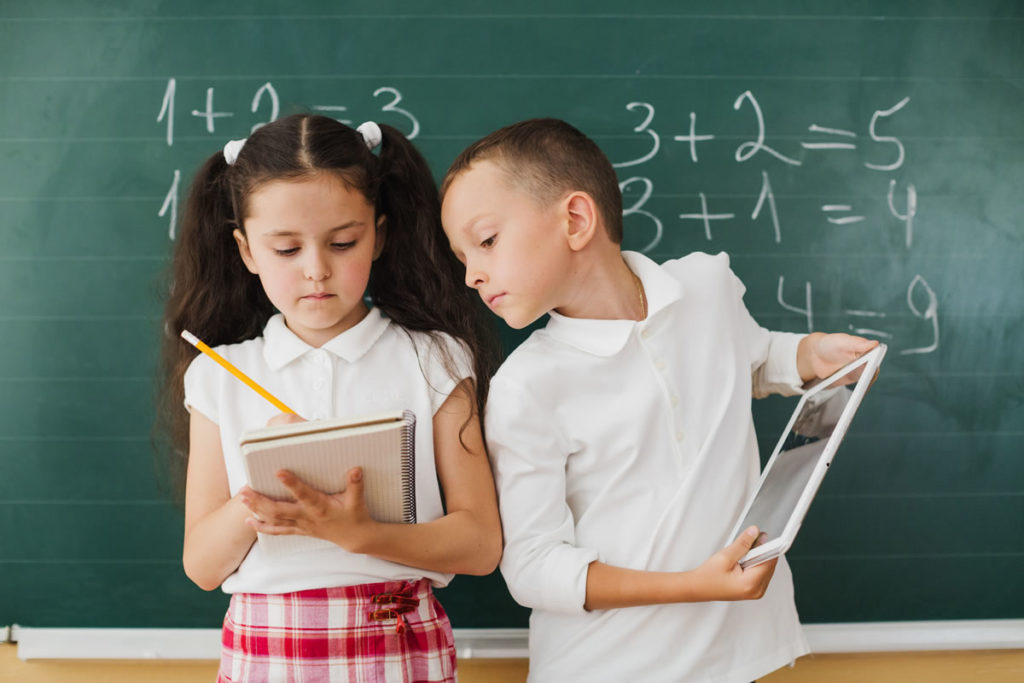One of the best ways to engage young children in mathematics is to make their teaching enjoyable and practical. Fortunately, there are many methods and tools to achieve this, and in this article we want to give you a few. Encouraging the development of mathematical thinking is essential in early childhood , since it will depend on the way in which children will face this subject over time, as well as the development of other skills, such as mental agility and logic.

3 fun tools to learn math
- Bathroom scale
The bathroom scale is a fun math “tool” to have at home and in class. This everyday gadget gives children the possibility to make immediate comments and, best of all, to be able to make them from their own “I”. Unlike many adults who dislike standing on a bathroom scale, children find the experience fascinating, making it a good tool to get them thinking and working with numbers in a relaxed and enjoyable way.
There are two types of bathroom scales: digital ones and those in which the numbers are visible on and off the scale. The digital scale is the best scale to use for this activity , as the other scale usually only shows tens or multiples of 20, which makes it quite abstract for young children. Since the digital scale usually shows decimals, you may want younger children to ignore the number after the decimal point. To avoid this detail we can say that the number after the decimal point tells us how close we are to adding another number or something like that, but it is better not to complicate the activity and leave the decimals aside.
Have your children or students step on the scale and read the number that appears. Offer help if necessary, and don’t worry that some children can’t read numbers , as doing so will come with time and experience. It is important, however, that you say the numbers out loud so they can begin to see how the words are connected to the symbols.
Ask the child who has climbed what the number would be if there were one kilo more or less. Then ask him to find something that you know weighs at least a kilo and have him go back on the scale and get on it again holding the object (make sure it is not too heavy for the child and stay alert). Then ask if the number is greater or less than what he weighed when he did not have the object. You can also ask the child if he can find something that makes the number go even higher. Then have him press only his hands on the scale and ask questions like this to encourage logical thinking: “Is the number that comes out higher or lower than when you were on it? Why do you think it happens like this? ”
- Measuring tapes and rulers
Children should grow up to be as familiar with the use of a ruler or tape measure as they are with a pencil, and that is certainly a mistake that parents and teachers alike make. After all, a ruler is simply a tool that we use when we need to solve a linear measurement problem . But since opportunities to use rulers or tape measures in the context of everyday life do not occur as often as those that require a pencil, here is a fun suggestion to get children to become familiar with this measuring tool as well. :

Tell them that you are going to measure the distance they can reach with a super jump. Show them the tape measure, preferably one that doesn’t have metal edges, and show them how to use it. Since young children often start measuring objects starting at the “1” mark on the ruler, suggest that they do it backwards and start measuring from the end of the tape. Then find a good place for them to jump and make sure the “start line” is clearly marked. Duct tape can work very well for this role. Kids love keeping track of how far they can jump and they like to see if they can beat their record. If necessary, help them read the numbers on the tape measure and ask questions like, “How many more inches did you jump this time?” To take this activity to the next level, see if the children can find objects around the house that measure the same distance as they managed to jump. You can also ask them to measure the length of their foot or arm or introduce them into measurement games with a ruler that consists of finding objects that measure approximately six centimeters, ten centimeters …, etc.
- Calendar
The calendar packs a punch when it comes to math moments that can be taught. Children in this way will not only learn to count the months of the year or the days of the week, but they will also reinforce their memory and begin to understand the concept of time and how long it takes until something happens, such as arrival. of summer after Christmas.
The benefits of learning math are many, but using the calendar adds many more positive emotional benefits. When children know what to expect, they feel more relaxed and in control necessary for their emotional stability.
A good recommendation is to get hold of a 12-month calendar and hang it in a prominent place in the home or classroom, low enough for children to “read” it. You can also help the little ones to point out and write down important weekly events , such as gym class on Mondays at 9:30 am, soccer practice class on Wednesdays at 3:30 pm, or the visit of the Grandma and Grandpa on Saturday at 11:00 am Every morning, be encouraged to talk about daily events and connect some of them to math with simple questions such as: “How many more days until Grandma comes to visit? How many days are there in September? ” As the children get older, they can write down the events of the year that are most important by themselves according to their own criteria, allowing them to count days and weeks and work with the numbers each day. This, in addition to reinforcing mathematical thinking, helps children learn how to shape and be in charge of their own lives. Without a doubt another ultra positive additional benefit.












































































































Thank you for helping me to have all these tools that are very useful to me.